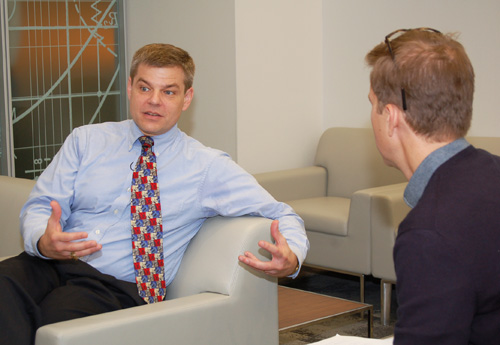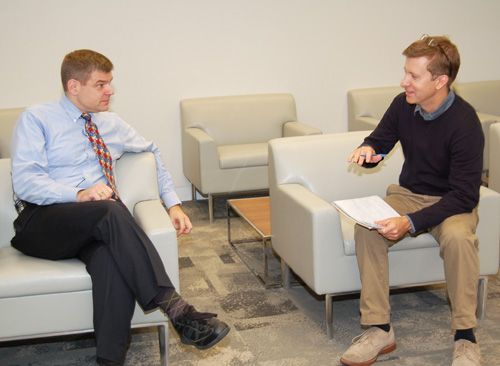Former ASME Federal Fellow Thomas Kurfess to Appear on National Geographic Special Next Week
Former ASME Federal Fellow Thomas Kurfess to Appear on National Geographic Special Next Week

One hundred years ago, Henry Ford revolutionized the manufacturing world when he introduced the modern moving assembly line. Next week, the National Geographic cable channel will commemorate the 100th anniversary of Ford’s brainchild with a television special, “Ultimate Factories: The Assembly Line,” which features an interview with 2012-2013 ASME Swanson Federal Fellow Thomas Kurfess.
The special, airing Oct. 18 at 9:00 p.m. Eastern Time, will feature archival footage and interviews to explore the history of the automobile industry and the assembly line’s impact on mass production in manufacturing, which transformed the way people worked and lived.
In his interview, which was filmed last month at ASME Headquarters in New York, Dr. Kurfess, discussed the significance of the assembly line and its importance to modern manufacturing. Kurfess, the HUSCO/Ramirez Distinguished Chair in Fluid Power and Motion Control and professor of mechanical engineering at Georgia Institute of Technology, served as assistant director for Advanced Manufacturing in the White House’s Office of Science and Technology Policy during his yearlong term as an ASME Federal Fellow.
As assistant director, Kurfess’ responsibilities included coordinating federal advanced manufacturing research and development, addressing issues related to technology commercialization, identifying gaps in current federal R&D in advanced manufacturing, and developing strategies to address these gaps.
When asked why it was important to celebrate the assembly line’s anniversary, Kurfess replied, “The assembly line really is the initialization of where America is today. It made America a tremendous industrial power and provided the cornerstone for global manufacturing. It started here in the states, spread throughout the world, and we can see where we’ve brought it today — not only in terms of cars, but planes, trains and pretty much everything that’s mass-produced today.”
Ford’s groundbreaking concept also paved the way for other breakthroughs, such as the use of robots in manufacturing, Kurfess said. “It was the first real integration, large-scale, of man and machine. Since Henry Ford started it one hundred years ago, we’ve gotten very efficient at it. We’ve really squeezed the efficiency to get every last penny out of that production capability. And we’ve also seen a lot of automation in computers. If we look at the modern assembly line, you see a lot of robots. The assembly line today is vastly different than it was 100 years ago.”
Because of these advances in the manufacturing workplace, however, workers need to realize the importance of continuing education, Kurfess said. Today’s assembly line, which he described as “very high-tech” also “requires people to have significant training,” he noted. “People who are involved in this area have tremendous job security. But we have to continue to train these people, whether it’s the next generation workforce or the current generation workforce. If you haven’t learned anything over the past 30-40 years, you’re a dinosaur. It’s all about lifelong learning.”

In addition to his term as the ASME Swanson Federal Fellow, Kurfess was the recipient of ASME’s Pi Tau Sigma Award, the ASME Blackall Machine Tool and Gage Award and the ASME Gustus L. Larson Award. He also the winner of the National Science Foundation (NSF) Young Investigator Award, an NSF Presidential Faculty Fellowship Award, the Society of Manufacturing Engineers (SME) Young Manufacturing Engineer of the Year Award and the SME Education Award. He is a Fellow of ASME, SME and the American Association for the Advancement of Science AAAS.
For more information on Ultimate Factories: The Assembly Line, visit the National Geographic Channel website.
Next month, Kurfess will provide opening remarks at the Advanced Manufacturing Impact Forum, which will be held during Nov. 18 during the ASME International Mechanical Engineering Congress and Exposition in San Diego, Calf. To learn more about the Forum and the rest of the 2013 Congress program, visit www.asmeconferences.org/congress2013.




